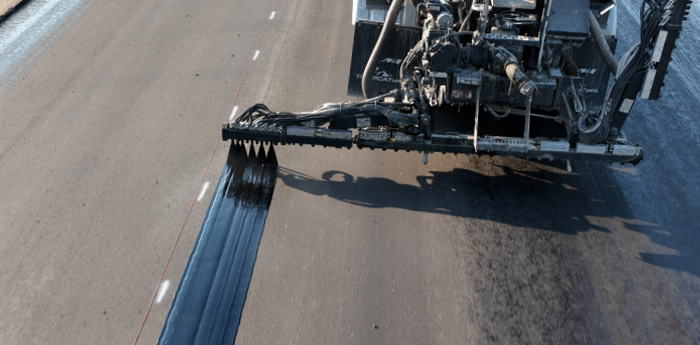
Void Reducing Asphalt Membrane (VRAM) or Longitudinal Joint Sealant (LJS) elevates pavement performance from the bottom up. Evergreen Roadworks is the world’s largest applicator of a premium class of VRAM/LJS known as J-Band. Unlike other treatments, J-Band significantly reduces air voids in longitudinal joints from the bottom up – literally. This not only extends the life of the joint, but improves the performance of the entire pavement.
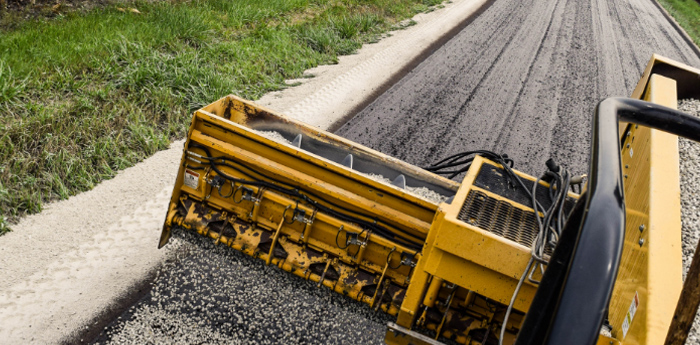
An application of asphalt emulsion or chemically modified asphalt, followed by a a layer of aggregate which is rolled and embedded into the emulsified asphalt. The process may be repeated to create a double or triple chip seal. Chip seals are used to prevent water intrusion into a pavement and create a high friction surface for safety. Chip seal emulsions can be polymer modified to improve aggregate retention and provide for a quicker return to traffic.
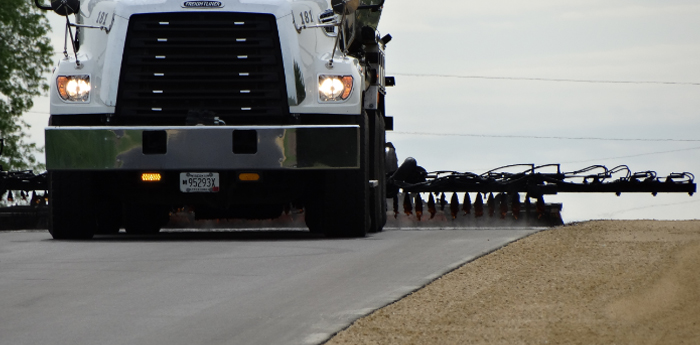
Micro surfacing is a surface treatment used as a preventative maintenance and corrective pavement treatment. It is used to increase surface friction, restrict moisture intrusion, protect the structure from further oxidation and raveling, and restore a uniform dark appearance. Micro surfacing is a mixture of fine aggregates, additives, asphalt emulsion and polymers. Due to the formulation, micro surfacing may be placed in greater thickness than slurry seal. It is the most economical choice when leveling or rut filling is required. Micro surfacing allows quick construction times and minimal disruption to the traveling public.
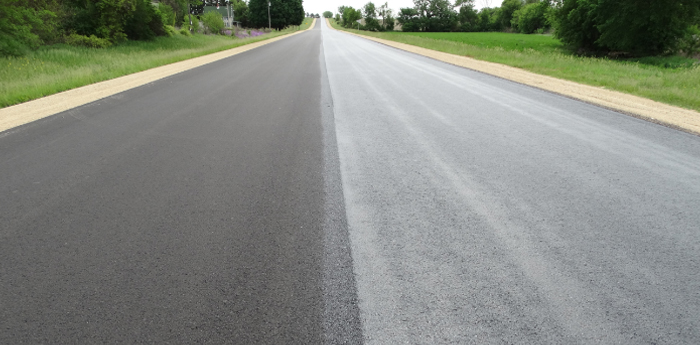
A Cape Seal is a two-step pavement preservation process that combines two surface treatments: a chip seal and a slurry seal or micro surfacing. A single flexible chip seal layer is placed first, allowed to cure, then it is covered with a durable and wear-resistant micro surfacing or slurry seal layer. This allows skid resistance, seals the pavement against moisture, protects the pavement from oxidation and raveling, restores a dark appearance, and seals moderate cracks.

Pug Mix is a carefully engineered blend of asphalt cement and aggregates mixed in a pugmill. Its design is ideal for road bases, offering a durable, water-resistant layer for new pavements or surface rehabilitation projects.
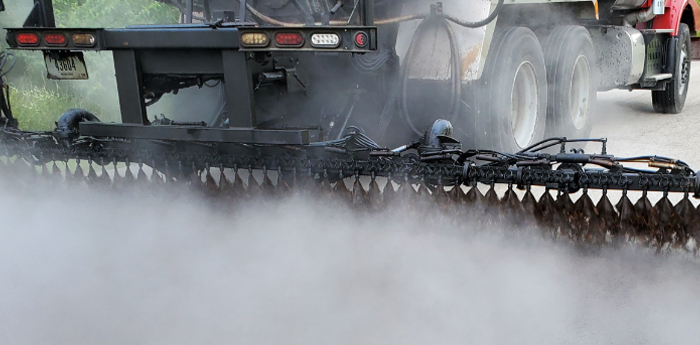
A fog seal is a single application, typically light, of emulsified asphalt to an existing asphalt road surface. This type of maintenance treatment can be a valuable aid to renew weathered (oxidized) asphalt surfaces and improve the surface appearance, seal minor cracks and surface voids, and inhibit raveling. Fog seals may also be used on chip seal applications to help lock the coarse aggregate and provides a dark color, which improves safety by making the striping more visible.

A tack coat is a light application of an asphalt emulsion designed to ensure a strong bond between asphalt pavement layers to prevent slippage or de-lamination of the hot mix overlay from the underlying layer caused by traffic and environmental factors. Tack coat is sprayed on a road surface before a layer of hot mix asphalt is placed.